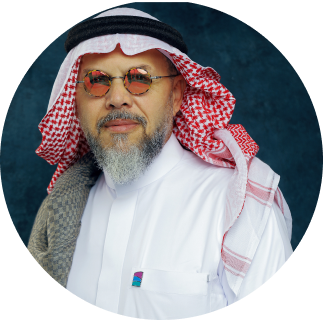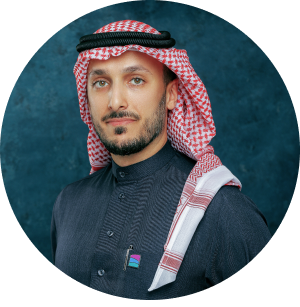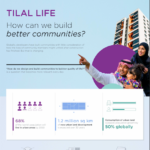
Alta de Lisboa (Portugal)


Welcome to TILAL LIFE


ABDULRAHMAN AL BASSAM CEO, TILAL REAL ESTATE
Why Tilal? Why now?
I’ve been fortunate enough to visit many beautiful places around the world. And there is one reason I go back to a select few over and over again: walkability. I’m drawn to places where I can walk safely and purposefully in and around the buildings and parks that give these destinations character.
To me, ‘meaningful walkability’ is fulfilling. I’m inspired by communities that prioritize walking because it means they prioritize people. And these are the reasons we travel in the first place — inspiration and fulfillment.
For a Londoner, Singaporean, or Melburnian, this fulfillment is something a person can experience every day, and I have always wondered why some cities of Saudi Arabia don’t offer the same. Please don’t blame the weather: London is notoriously wet and miserable, it’s hot and humid all year in Singapore, and if you search the word Melbourne, one of Google’s first returns is literally the question, ‘why is the weather so bad in Melbourne?’ Despite its infamous weather, Melbourne ranked 2nd in the Global Liveability Index in 2020 after ranking 1st seven years in a row. Calgary, the city I studied in for my bachelor’s degree, has unimaginably cold and dry weather most of the year, and it ranked 5th.
Not only is walkability one of the main components of Urban Design, but it’s also one of the criteria that the GLI measures. And now, Vision 2030’s Quality-of-Life program aims to put at least three Saudi cities in the top 100 over the coming decade. Moreover, this year’s announcement of Neom’s The Line Masterplan by the Crown Prince himself is further evidence that the way we look at urbanism and community is changing.
But we don’t have to look outside or into the future to see communities that offer a world-class quality of life. Jubail, Yanbu, Dhahran Hills, and Riyadh’s Diplomatic Quarter were built decades ago and are proof that we can do it again. If we look into their stories of origin, we find common values that guided their founding fathers; values like respect for specialization, the ambition of the vision, and the centrality of the family and the human being.
Those were the same values that Tilal Real Estate Development Company was founded upon in its mission to build the most desired communities in Saudi Arabia to live. It embodies an alliance of some of the largest family business corporations in the country that share a single vision: Building for Fulfilling Lives and Inspiring Communities. And that is what we intend to do!
| Thank you for Signing Up |


ISSUE #1
Community is the lens through which we live — both a venue for the everyday and a backdrop for life’s singular moments. Communities unite people, giving them a sense of cohesion, comfort, and harmony. Communities assemble and provide access to vital resources, enabling our fulfilment and even survival. Communities promote connection and togetherness.
Globally, the consumption of urban land outpaces population growth by as much as 50% and is expected to add 1.2 million square kilometers of new urban land development over the next 30 years.
Data used to monitor street networks suggests that neighborhoods in 90% of the world’s most populous countries have become less connected and more segregated since 1975. Moreover, a near doubling of the maze-like streets that characterize gated communities has occurred over the same period. And the distances between us are only growing Globally, the consumption of urban land outpaces population growth by as much as 50% and is expected to add 1.2 million square kilometers of new urban land development over the next 30 years.
Inspired by the traditional town planning principles of the early 20th Century, the new urbanist neighborhoods of human-centric communities combine residential, commercial, civic, and industrial zoning with ample public space. They are designed to bring people together.
Unlike places that require a car or motorbike to move around, human-centric communities are walkable, with plentiful biking and public transit choices. Human-centric communities thrive on social interaction, and so do their residents, reducing loneliness and the collective distress common in isolated locales, especially during a crisis.
They offer inviting public places close to where people live and work, supporting a healthy lifestyle and everyday fitness, making it easy for people to get their 10,000 steps without a car ride to the mega-gym. And data shows that people-first communities have other societal, environmental, and economic advantages besides.
North American tax modeling suggests that the most productive community land comes in the form of mixed-use downtowns and neighborhoods, with single-use developments offering lower financial productivity. Moreover, cities that encouraged urban sprawl now find themselves allocating resources to unproductive liabilities, such as water pipe maintenance, that could be better and more efficiently spent elsewhere.


Alta de Lisboa (Portugal)
One of the largest projects in Portugal’s capital of Lisbon, the Alta de Lisboa urbanization and renewal plan, is comprised of a vast 300 acres with housing for 60,000 residents. Construction first began in 1984 on a community that was designed around the concept of placing its businesses, services, hotels, parks, sports and leisure facilities, and transportation infrastructure close to all residences.
Alta de Lisboa’s urban renewal strategy involved transforming three different parishes into a simple, unifying space to encourage connection, pride, and dignity. Once completed, Alta de Lisboa will integrate nearly 70 hectares of green area that, along with structured plant life, will mesh with the community’s housing, creating a highly sustainable form of urbanism.

Jakriborg (Sweden)
Sweden’s community of Jakriborg, and its award-winning medieval style architecture, broke ground in 1998 and completed its first residential phase in 2003. Originally conceived as a small, high-density, and affordable mixed-use, low-traffic community, Jakriborg’s popularity has led to steep growth, which the neighborhood’s founders are committed to accommodating organically.
Despite their pre-industrial exteriors, Jakriborg’s 400 rental apartments feature modern interiors and are walking or bike-riding distance to all of the community’s amenities – and even other nearby neighbourhoods. Housing types span accommodation for single dwellers, students, families, and seniors, with a wide range of income considerations. The community’s retail and recreational resources were designed to be within a 5-minute walk of all residential units.

Located in Queensland, Australia, Kelvin Grove Urban Village was completed in 2014. The community’s mixed-use development consists of more than 1,100 medium-density residential units, including affordable housing and accommodations for students and seniors. In addition to 50,000 square meters of commercial office space, Kelvin Grove’s mixed-use development includes university facilities, retail units, a shopping center, a supermarket, a 400-seat theatre, and a range of public and university health and recreational resources.
The village’s Queensland University of Technology campus hosts many of the community’s amenities on the school’s grounds, facilitating Kelvin Grove’s overall feeling of multigenerational education, artistry, and connection.

Jubail Industrial City
(Saudi Arabia)
One of the world’s largest and most prosperous industrial cities, Jubail Industrial City covers 1,016 square kilometers and includes commercial complexes in addition to port facilities, a busy major harbor, an airport, and accommodations for 120,000 people.
Due to its location in the Eastern Province, Jubail supports the development of energy-intensive industries and accounts for 7% of Saudi Arabia’s GDP. Jubail’s development work began in 1975, and through a 2016 extension plan, will continue its goal of providing residential living space, education facilities, medical centers, pleasing greenbelts, and other people-friendly infrastructure elements that complement the community’s industry-based focus. Jubail’s major operations include Saudi Aramco Total Refining, Saudi Arabian Basic Industries Company (SABIC) and the $20 billion SADARA petrochemicals complex.
Better communities by human-centric design have become a necessity. The need to reinvent the way we build, reimagining the way we live together has only become more pressing in our current climate of uncertainty. The coronavirus pandemic and its associated lockdowns further exposed the underlying issues of inequality and isolation that our suburbs cause.
When we needed community most, they let us down. But the world’s leading urban planners are looking forward. Through innovative housing policies and new planning approaches, human-centric communities can build on the principles of access and proximity that are better for everyone.
| | Thank you for Signing Up |



